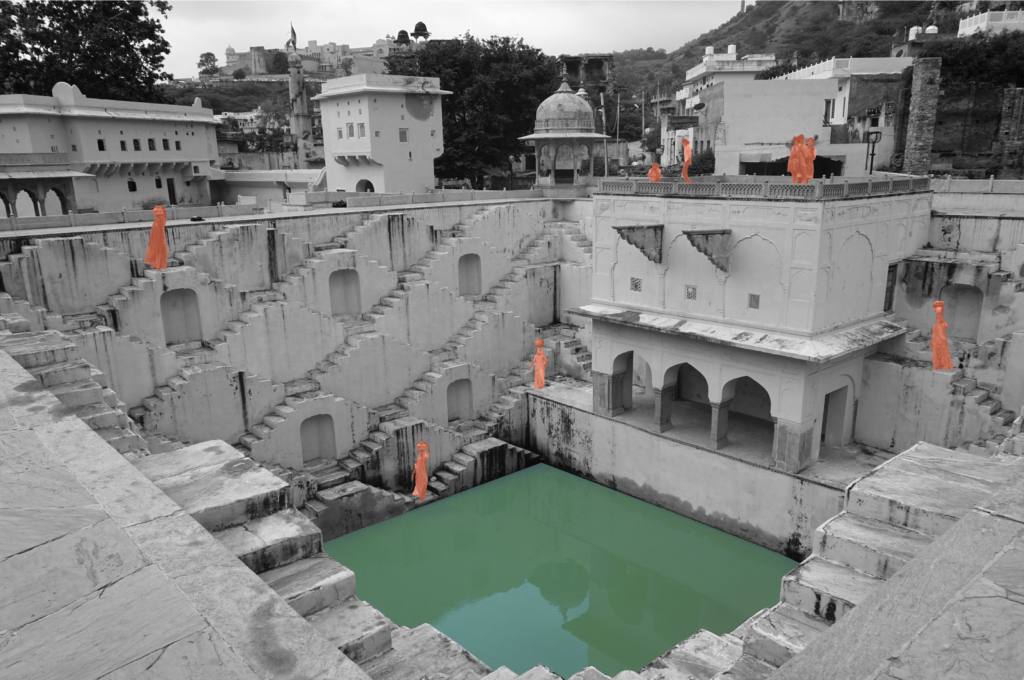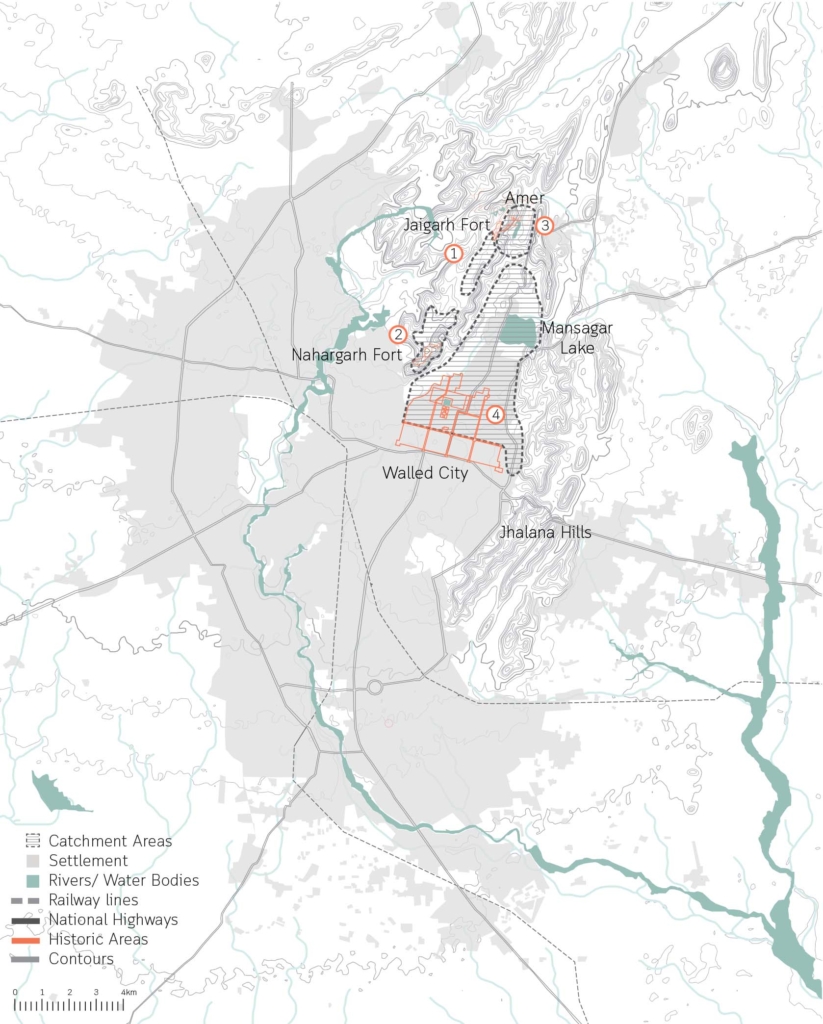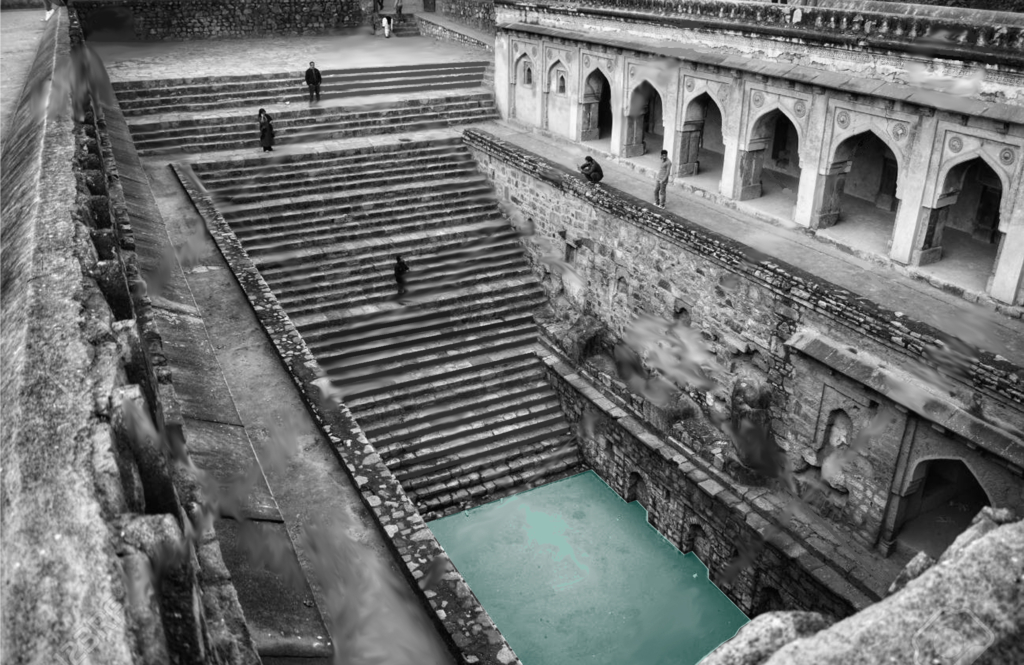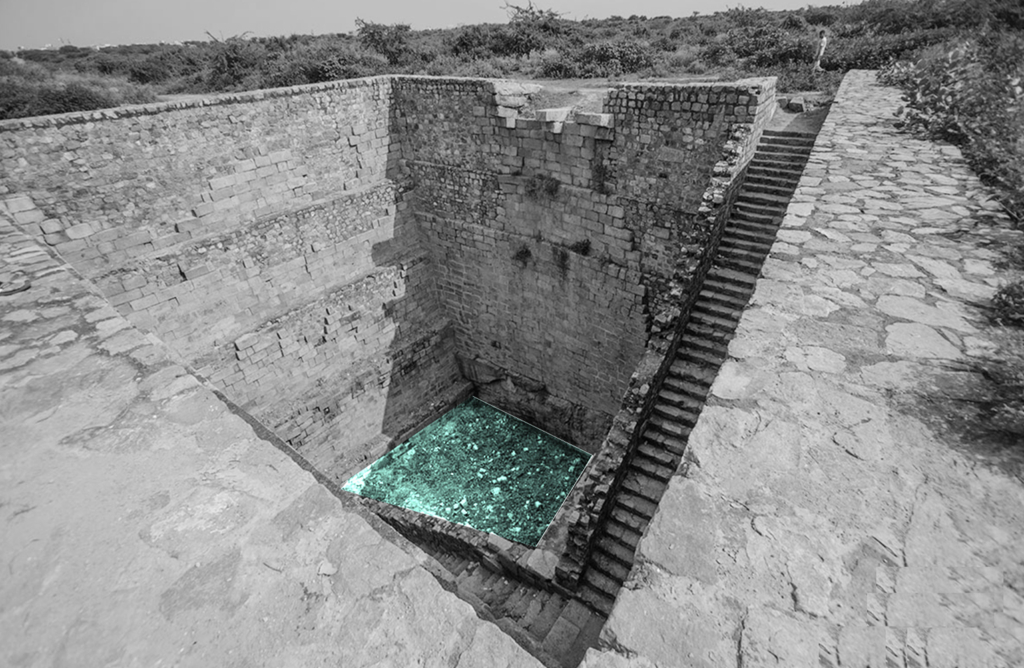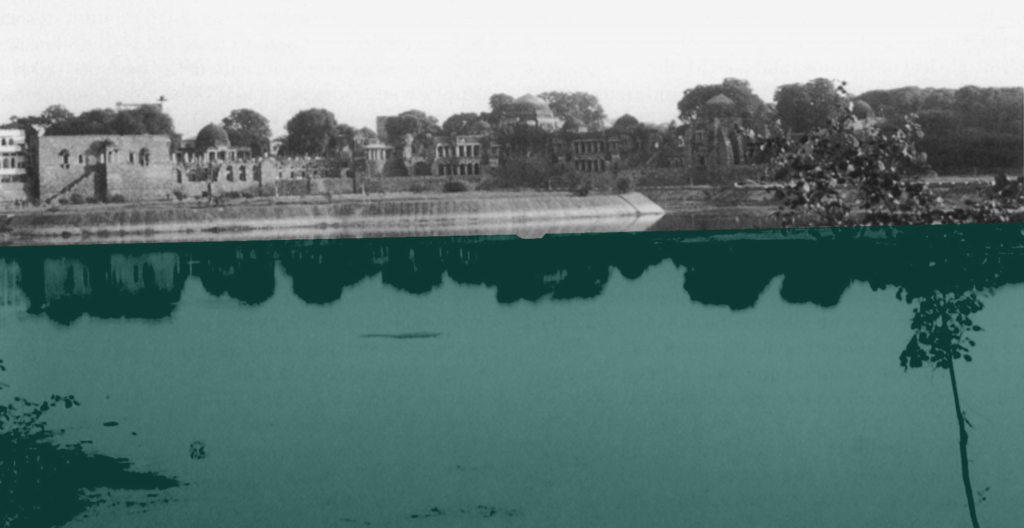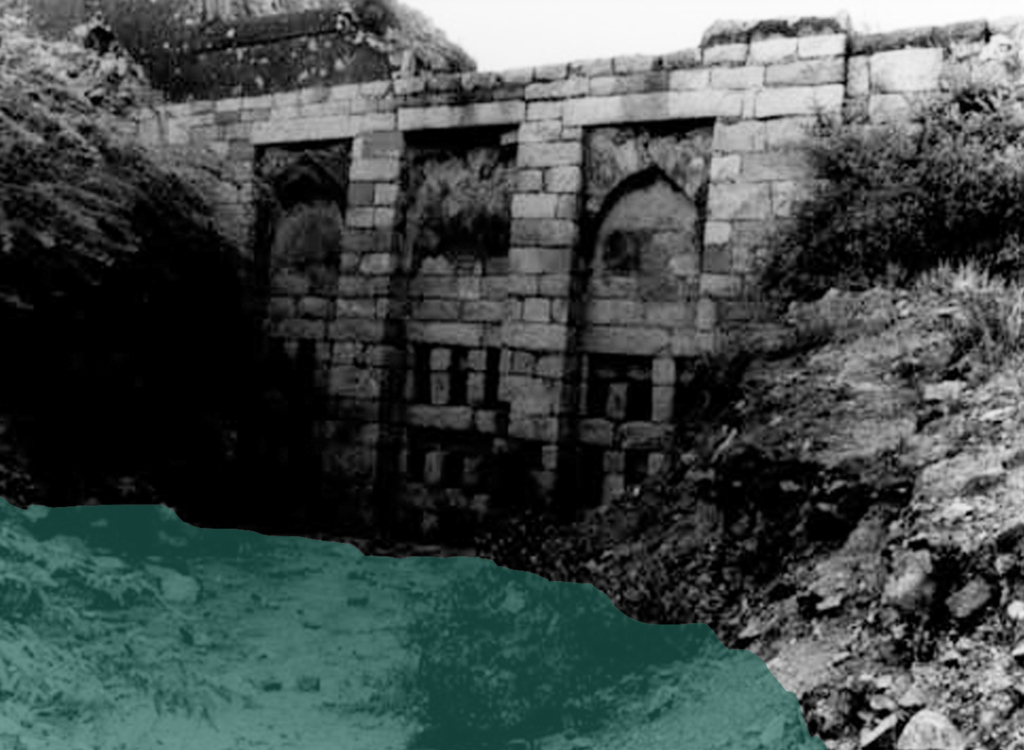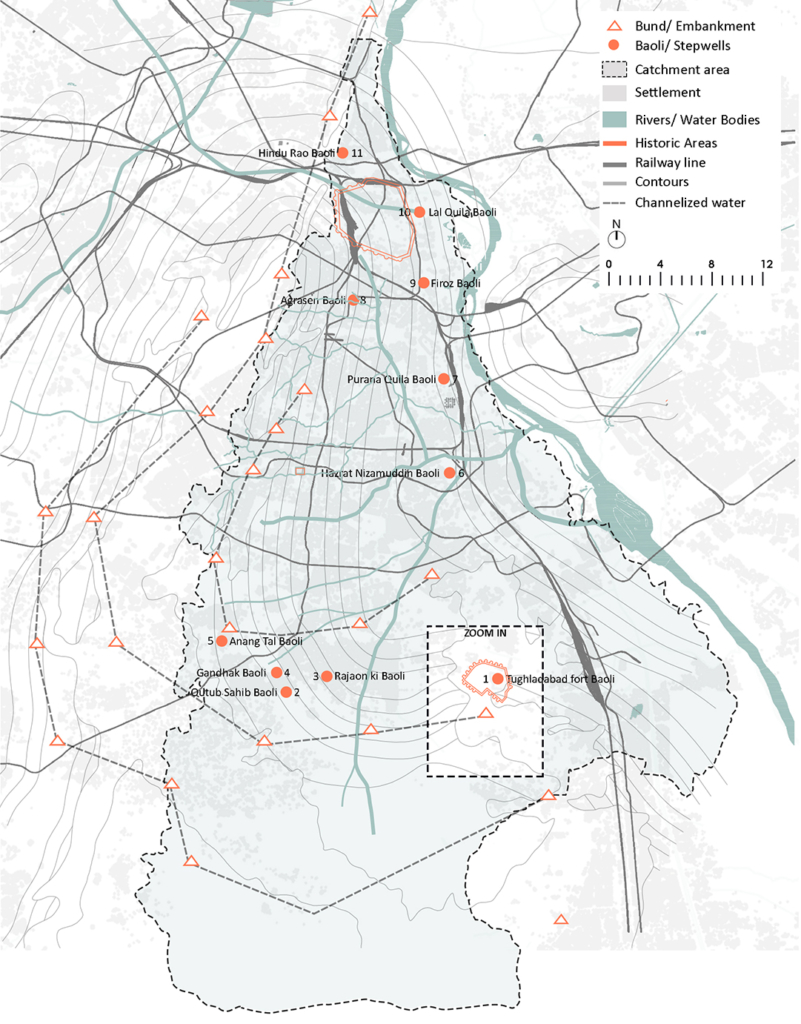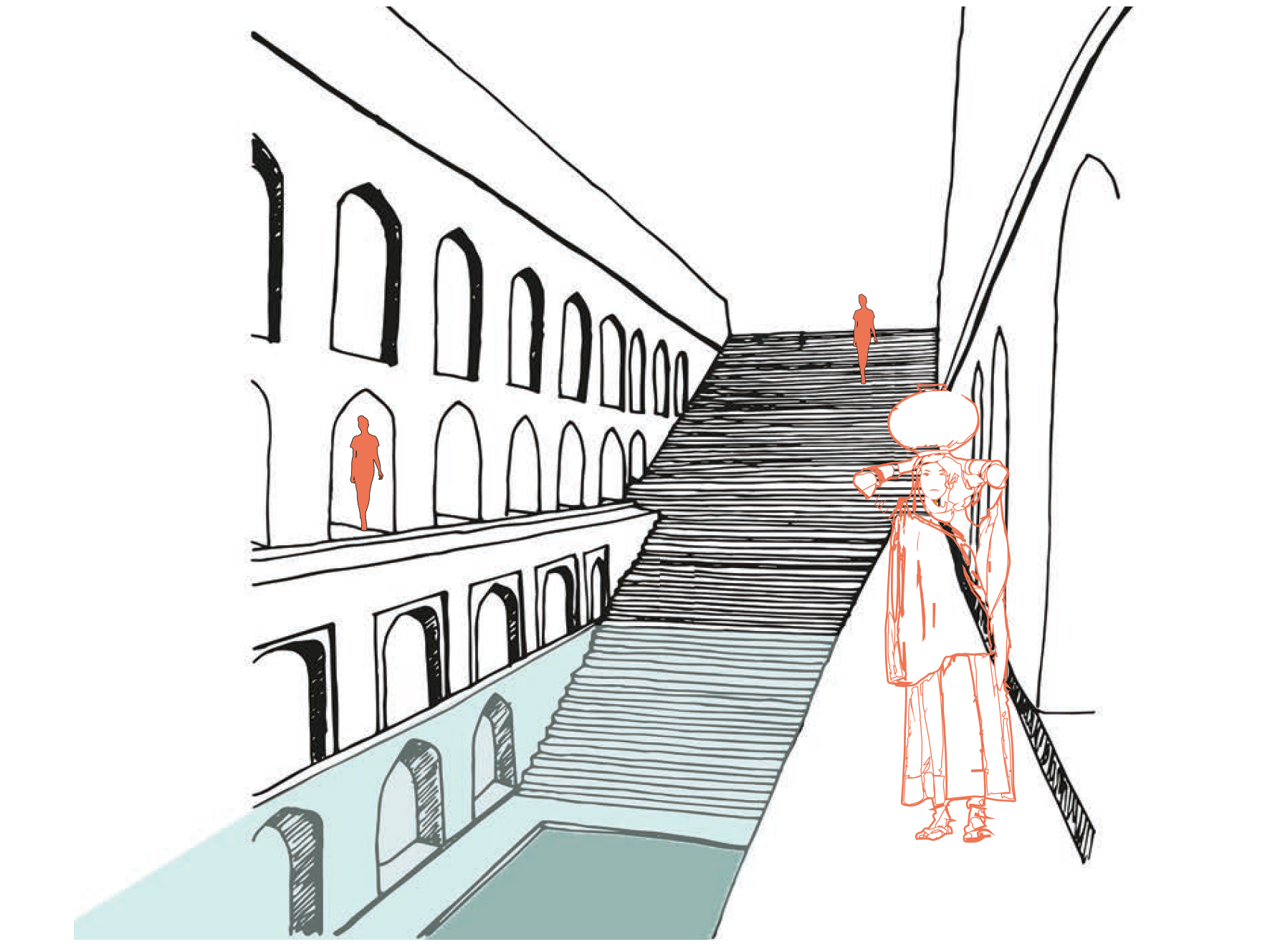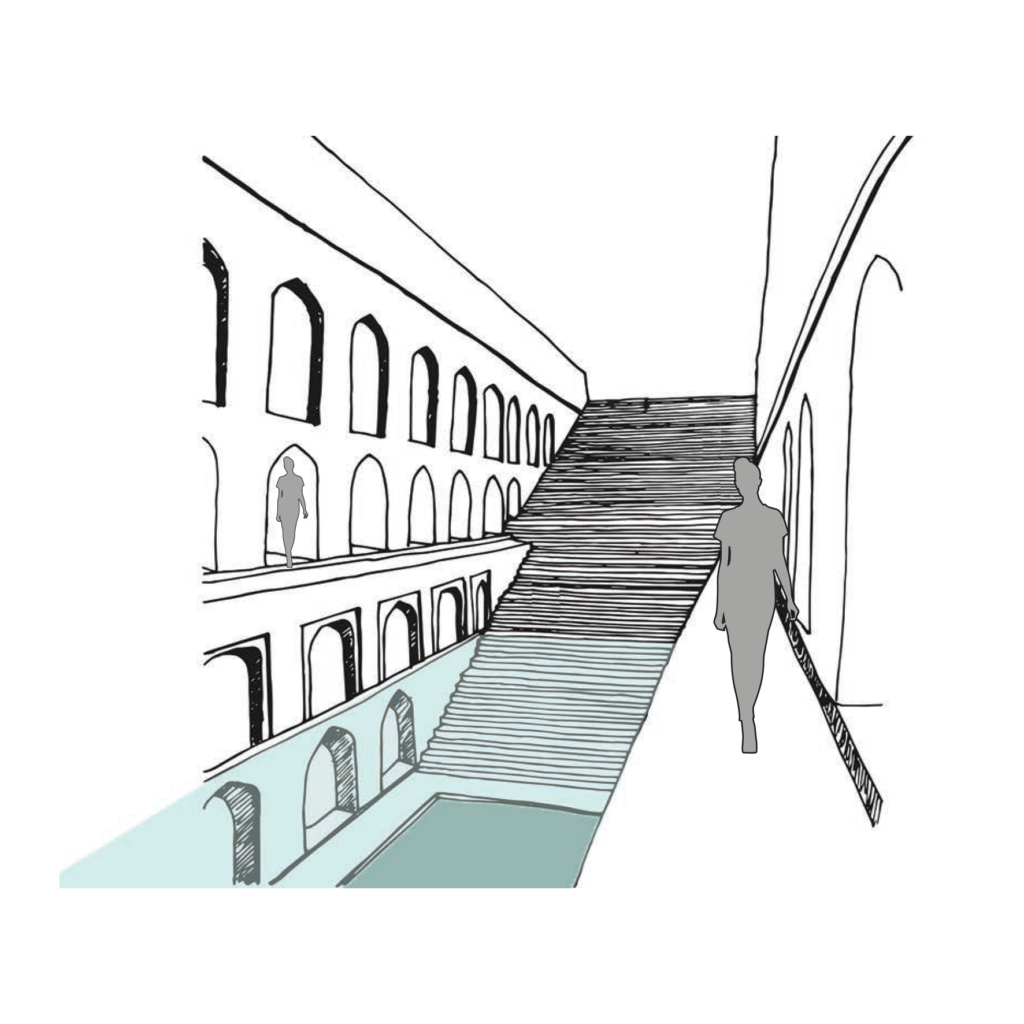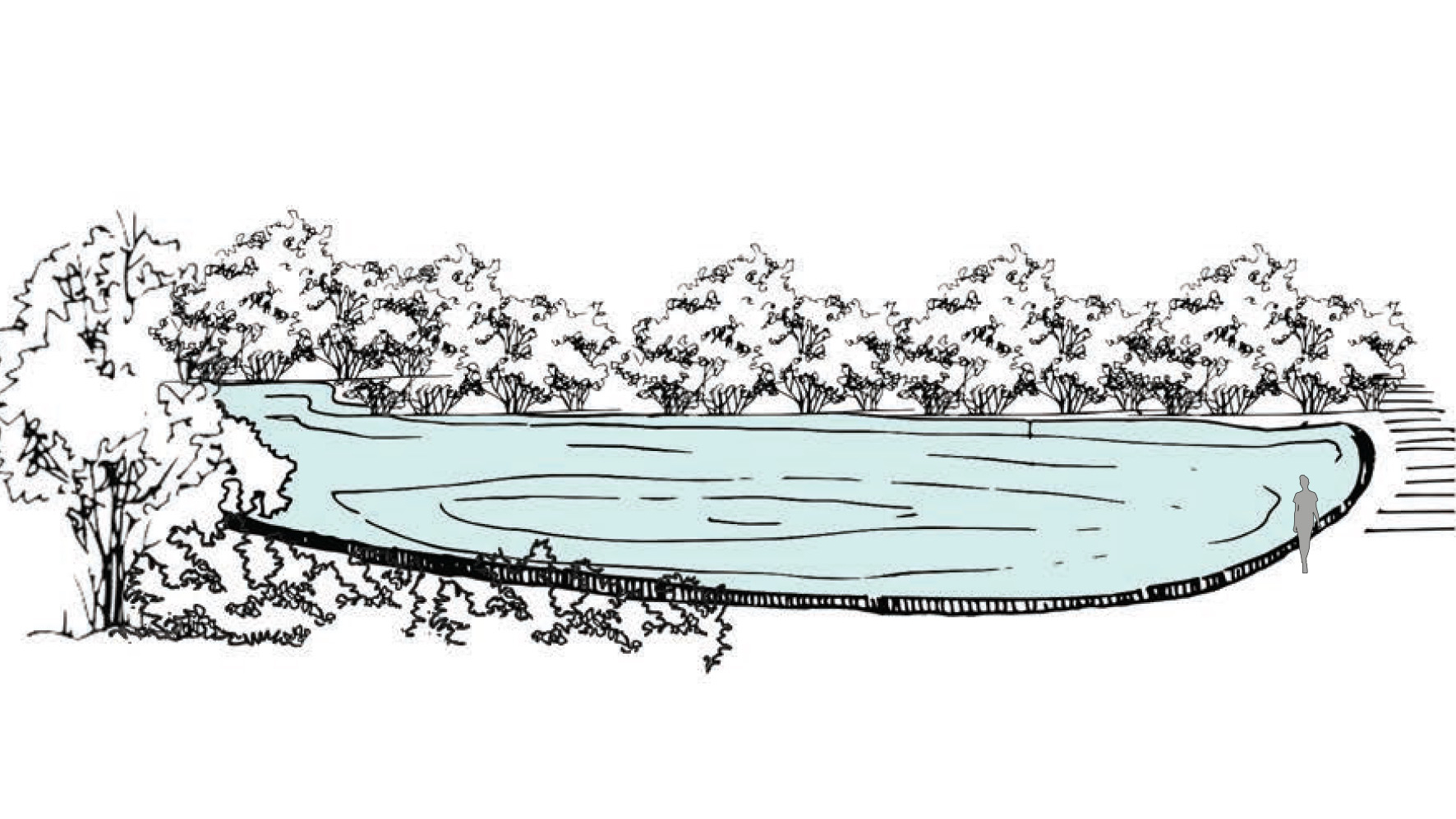
Traditional water harvesting system in Sassi di Matera, Italy
Wenting Gao
2023
The two districts of Matera, Sasso Caveoso and Sasso Barisano, were built in the eroded terraced land near the natural water courses, called Grabiglioni, and formed by buildings and rock architectures carved into the rock of the Murgia Matera. Together with the Civita district (built on the spur that separates the two Sassi), they constitute the historic centre of the city of Matera. The water-harvesting system was composed of cisterns, catch basins, ponds, wells, fountains, condensers, neviera, as well as horizontal and vertical water channels. About 2210 cisterns were identified using a statistical approach, including 2039 small bell-shaped cisterns, 170 neighbourhood cisterns and two large cisterns of 1,300 and
5,000 m³ each. Water not only shaped the physical part of the city, but also influenced the way people live and work. The successful water-harvesting system created an an agro-pastoral society where most people were engaged in agriculture and husbandry, and about 56% were still land working peasants in 1754.

The grabiglioni, an important water channel in Sassi di Matera, is also the centre of public life. The vicinato, a common courtyard where children would play together and everyone helped each other out, is always accompanied by a cistern serving 4-6 families, so it naturally becomes the place for different domestic chores and social interactions.
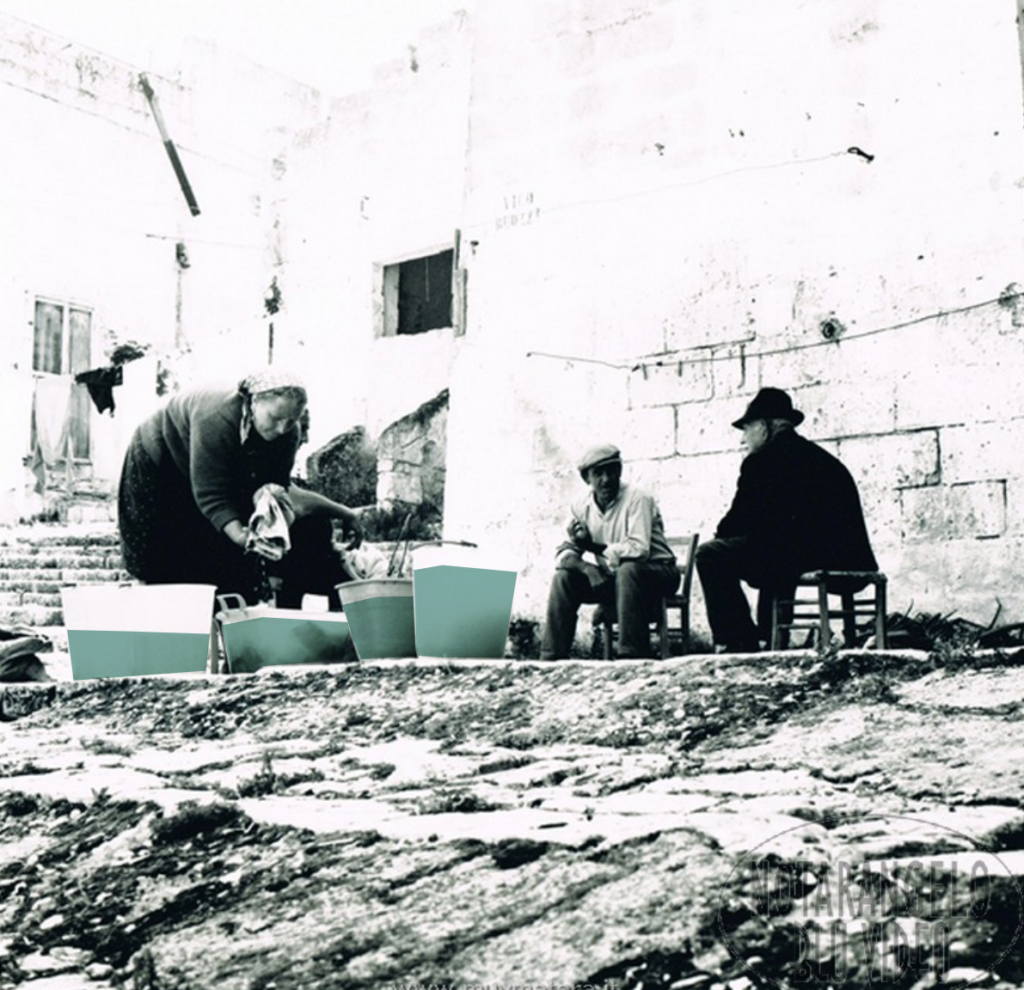
Circular Stories
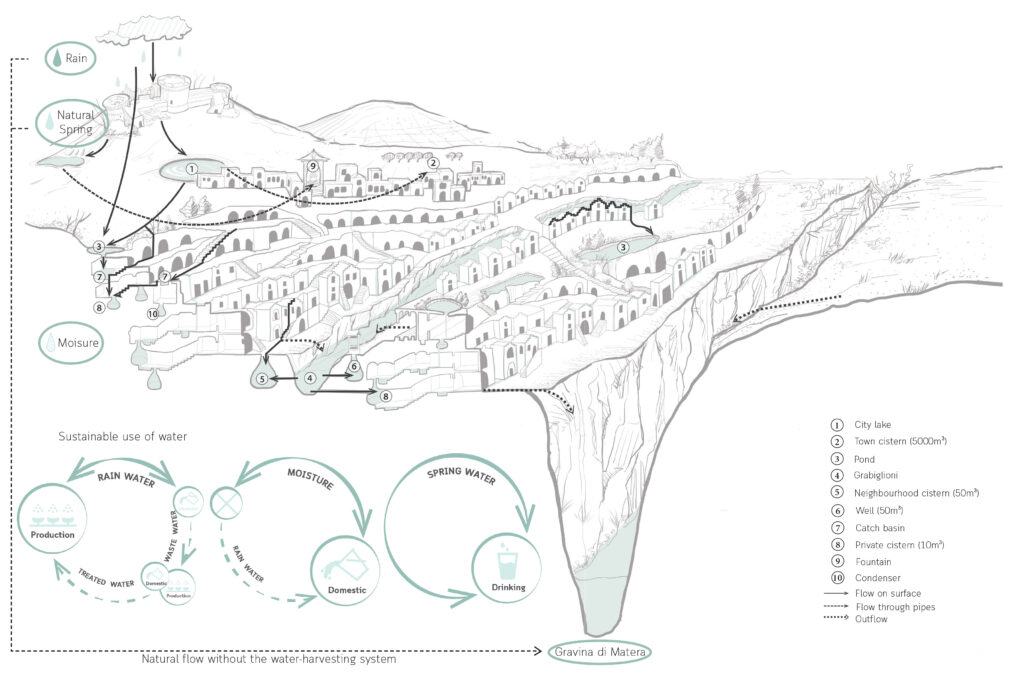
di Matera around 1700s; Circular diagrams of water usage (Bottom left).
There are three types of water sources in Sassi, rainwater, natural springs, and moisture. In a natural condition, they will directly go into the Gravina di Matera, but with the help of the circular water system, they are used in a sustainable way for production, domestic use and drinking purposes.

Firstly, the rainwater, which is also the dominant source in Sassi, is collected in lakes, ponds or catch basins at first, then goes into cisterns of different sizes with the help of horizontal and vertical water channels on roofs, stairs, wall and ground. Some cisterns are interconnected by underground pipes, while others are quite private and isolated. There is a water tank that is completely isolated, and it is used as the condenser to collect moisture, which is also a hidden water source in Sassi. In addition, a natural spring near Tramontano Castle is the only drinkable water source, which later led to the Fountain Ferdinandea for people to use.

